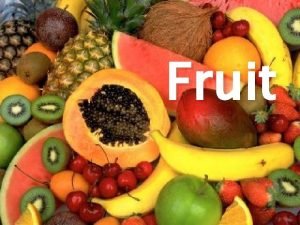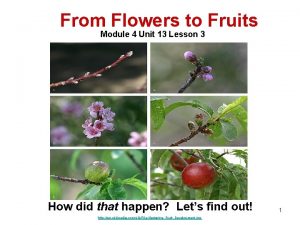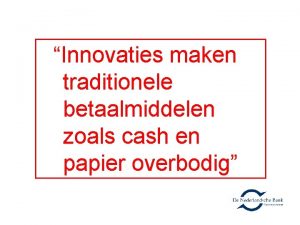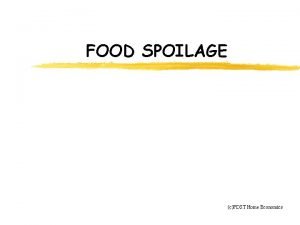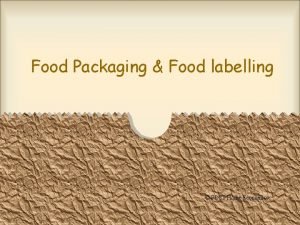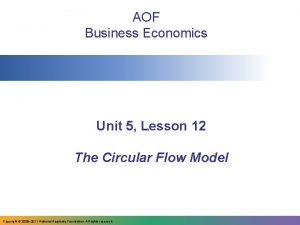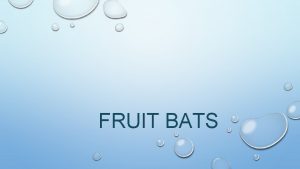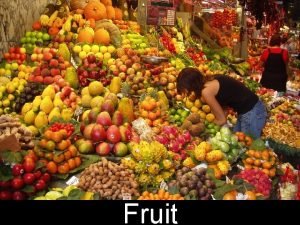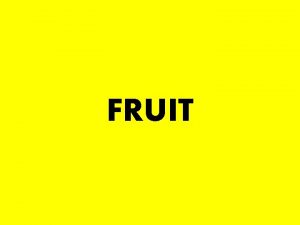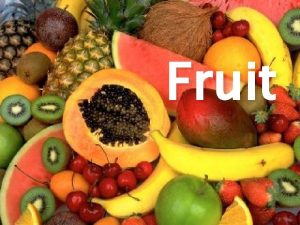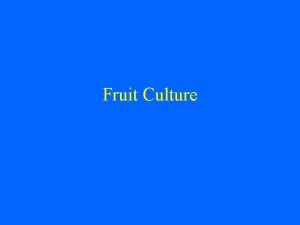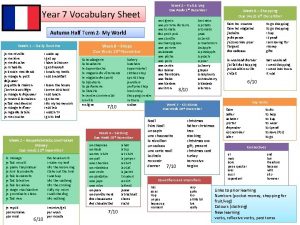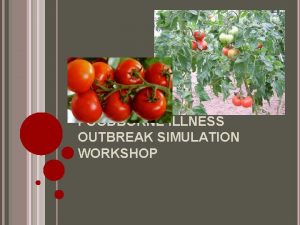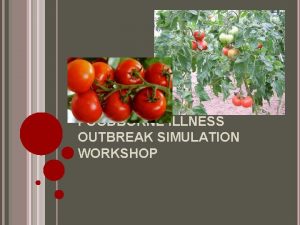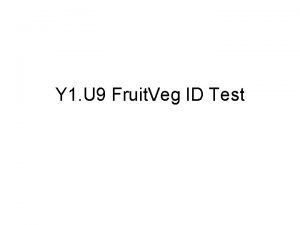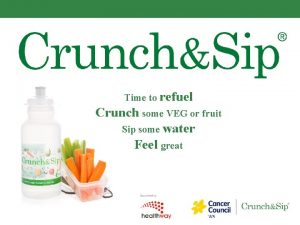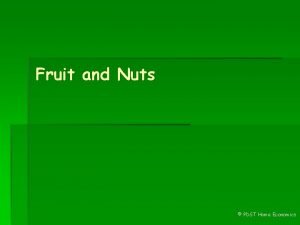Lunch with Punch Home Economics Victorias Fruit Veg




















- Slides: 20

Lunch with Punch! ‘Home Economics Victoria’s Fruit + Veg Program is a partner program of Kids – ‘Go for your life’, which is managed by Cancer Council Victoria and Diabetes Australia Victoria.

Department of Human Services ‘Go for your life’ Kids – ‘Go for your life’ (managed by Diabetes Australia – Vic and Cancer Council) Fruit + Veg Program Healthy Canteen Advisory Service (managed by Home Economics Victoria) (managed by Nutrition Australia – Victorian division)

Fruit + Veg Program • Aims to increase the consumption of fruits and vegetables among primary school-aged students • Teachers attend a workshop in term one • Free resources and training provided • Implement the program during Fruit + Veg Week in term two

School lunch issues Parents’ concerns: Children’s concerns: • Time • Lunchbox style • Cost • Boring • Food poisoning • Too dry • Environment • Fiddly and sticky • School infrastructure • Social ramifications

‘A healthy lunch must be one that does not fall apart, can be eaten on the run, does not stink when opened and does not make your breath smell like a possum’s bum for the rest of the afternoon. ’ Jane Cafarella 2008, ‘Opening up pandora’s box’, Age Education liftout, 14 July

Why is a healthy lunchbox important? • • • Nutrition for growth Active children need energy Improves concentration and memory Promotes good health and prevents illness Affects behaviour Variety

Why bring lunch from home? • • • Cheaper Control portion size Meets likes/dislikes Monitor sugar, salt and fat intake Understand the relation to breakfast and dinner • Prevents exposure to allergens • Aware of ingredients and cooking method

What makes a lunchbox healthy? • Vegetables (5 serves per day) • Dairy • Protein • Fresh fruit (2 serves per day) • Carbohydrates • Water

Simple lunchbox formula Sandwich or alternative + fruit + 1– 2 healthy snacks + water Source: Coles cares healthy lunchbox program

Sandwich or alternative + fruit + 1 -2 healthy snacks + drink Leftover vegetarian pizza Strawberries Natural yoghurt Water Handful of blueberries Unsalted popcorn Water Bunch of grapes Hard boiled egg + Rice cakes with vegemite Water Kiwifruit and spoon Celery, carrot and capsicum sticks with hummus Water Tuna and salad wholegrain roll Bean salad Zucchini slice Wholemeal flat bread spread with hummus and stuffed with salad and falafel Mandarin Sultanas and cheese stick Water

Snack attack • • Sushi Frozen fruit Mini pizzas Dips Fruit kebabs Melon balls Smoothies Vegie stuffers • • • Baked beans Rice paper rolls Corn on the cob Frozen yoghurt Soups

Hidden traps • • Luncheon meats Juice Dairy desserts Flavoured milks Sweet dips and chocolate spreads ‘Oven baked’ savoury biscuits Muesli and ‘breakfast’ bars Fruit wraps and chews Rule of thumb: When in doubt – nude is best

Healthy lunchbox ideas Protein Breads and cereals Vegetables and dairy serve Fruit

Healthy lunchbox ideas Fruit Vegetables Breads, cereals and vegetables Protein

Healthy lunchbox ideas Breads and cereals Vegetables Fruit Protein

Lunchbox safety • Hygiene Before preparing your child’s lunchbox, always wash your hands well with warm soapy water and make sure all chopping boards and utensils are clean and dry. • Temperature Lunches made the night before should be kept it in the fridge (below 5°C) overnight. Any lunchbox containing meat, fish, chicken, eggs, noodles, rice, pasta, custard, yoghurt, cheese or milk needs to be kept cold to prevent food poisoning. Perishable foods above should be eaten within four hours of preparation. Do not pack these foods if just cooked – cool in the refrigerator overnight. Use an insulated lunchbox, frozen drink or ice pack to keep lunches cool and a thermos to keep food hot. Clean lunchboxes after each use and throw out uneaten food.

Safe foods • Fresh or dried fruit • Pieces of vegetable – carrot and celery sticks, etc. • Wrapped cheese sticks • Drink of water or juice which has been frozen overnight • Vegemite or peanut butter sandwiches • Canned food e. g. tuna

Foods to be avoided when not kept cold • All meats except dried meat • Dairy products – yoghurt, soft cheeses, milk (flavoured or plain) • Rice and pasta • Mayonnaise and eggs • Foods which would normally be kept in the fridge e. g. seafood and cooked leftovers

Time savers • • • Get the kids involved Freezing Cooking and buying in bulk Individually wrapped Leftovers

How to tackle fussy eaters • • • Involve children in food selection and food preparation Taste as you cook Colours and textures Use positive language Pre-program kids to think a dish tastes good Eat together Practice your ‘Yums’ Serve an unfamiliar food with a familiar one Encourage but don’t force or bribe Quality not quantity Dips, soups and smoothies Role model, role model
 Megaspore 2n
Megaspore 2n Smirnoff sour fruit punch
Smirnoff sour fruit punch She said that, home economics stands for the ideal home.
She said that, home economics stands for the ideal home. Las victorias de los aliados
Las victorias de los aliados Queen victorias family tree
Queen victorias family tree Victorias sece
Victorias sece Victorias sece
Victorias sece Fruit and vegetable meaning
Fruit and vegetable meaning Parts of a fruit
Parts of a fruit Dehiscent vs indehiscent
Dehiscent vs indehiscent Vrije evangelische gemeente goes
Vrije evangelische gemeente goes X tract f vestige
X tract f vestige Veg geldermalsen
Veg geldermalsen Veg geldermalsen
Veg geldermalsen What is mathematical economics
What is mathematical economics Maastricht university school of business and economics
Maastricht university school of business and economics Cpdst
Cpdst Pdst home economics
Pdst home economics Meaning of food packaging in home economics
Meaning of food packaging in home economics 1950s home economics textbook
1950s home economics textbook Economics unit 5 lesson 4
Economics unit 5 lesson 4







